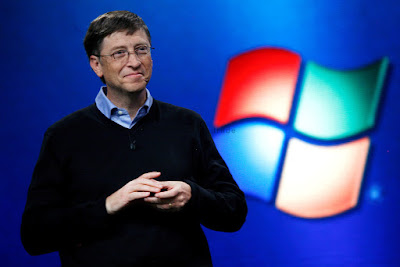You want to be in control of that shampoo bottle, not the other way around.
During the brief period between graduating from business school and the start of my first real job, I felt on top of the world. I knew the theories. I’d read the case studies. I’d generated brilliant solutions and business plans for hypothetical companies. I had a brand-new briefcase and some sharp professional clothes. I was so ready to impress.
During the brief period between graduating from business school and the start of my first real job, I felt on top of the world. I knew the theories. I’d read the case studies. I’d generated brilliant solutions and business plans for hypothetical companies. I had a brand-new briefcase and some sharp professional clothes. I was so ready to impress.
My First Day
 And then that first day came, and I started
my job as a marketing manager at Proctor & Gamble. I got my desk, my phone,
a tour… and an assignment: “We’re developing a new shampoo product. We need you
to figure out how big the hole in the bottle should be.”
And then that first day came, and I started
my job as a marketing manager at Proctor & Gamble. I got my desk, my phone,
a tour… and an assignment: “We’re developing a new shampoo product. We need you
to figure out how big the hole in the bottle should be.”
Like many a newly minted hotshot before me,
I thought, “You have got to be kidding me. I’m an MBA, not a designer! Don’t
people who spend their careers designing shampoo containers already know the
answer? Isn’t there a chart somewhere? Besides, what difference could it
possibly make if the hole is four millimeters or six millimeters?”
Of course, I did not say any of that.
My next thought was, “Wait a minute. Maybe
this is just a logic test. The answer is simple: Make the hole bigger so the
customer will use more shampoo and then have to buy more.”
But as I started to research this issue, I
realized it’s not a design decision. Forget the countless business-school case
studies I’d read — this was my first real-world lesson in marketing.
Determined to do well on my first
assignment, I used the consumer research tactics that were the heart and soul
of P&G: I read stacks of existing research; talked to consumers in focus
groups and one-on-one interviews; and shadowed customers as they shopped. Like
a sponge, I soaked in their needs, desires, and pet peeves. I listened intently
to their stories about the way our products made them feel.
A Real-World Education
I had just learned my first and arguably
most important lesson in consumer marketing. You do not know what you do not
know. Don’t forget to listen to the people who have a stake in whatever you are
about to do.
Here’s the thing: Consumers are very
particular about shampoo because the shower is a very personal, sometimes
vulnerable place. It’s never feels good to be duped by some corporation’s plan
to increase sales, but especially not when you have soap in your eyes and no
clothes on. You want to be in control of that shampoo bottle, not the other way
around. So, after hearing from our customers, we designed a bottle with a hole
that provided just the right amount of shampoo — not too much, or too little.
Active listening is a vital skill for any
leader. It builds and strengthens relationships between customers and brands,
or managers and employees. It helps leaders appreciate that everyone has something
to contribute to the business, the brand, the reputation.
Why It Matters Today
I’ve carried this philosophy with me
throughout my career. Now, as CEO of Hewlett Packard Enterprise, I listen
carefully to our customers, partners, and employees as they navigate today’s
ever-changing technology landscape. Hearing about their challenges — their
unique journey to the cloud, or how they’re trying to make sense of big data,
or protect themselves from cyber threats, or provide digital experiences
anytime, anywhere and on any device — demonstrates what issues are most
important to them, and ultimately helps me make better business decisions.
It doesn’t matter whether your product is a
server or a shampoo bottle. Taking the time to recognize, understand, and appreciate
what the people around you have to say will mean the difference between success
and failure.
This article was first published on February 29, 2016 by Meg Whitman on her LinkedIn Page.
Copyright © 2017 LinkedIn Corporation.





